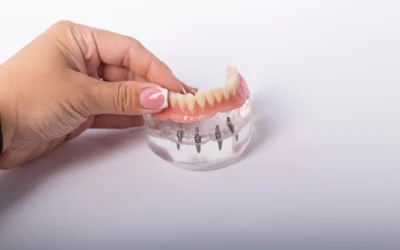Most dental emergencies fall into one of three main categories: trauma, localized infection, or systemic infection. Dental emergencies all have one thing in common – pain. Whether it’s the pain caused by a blow to the face or the searing pain of a tooth abscess, the pain is an indication that you have a problem that needs professional attention.
How do you know if you’re dealing with a crisis that can’t wait till a regularly scheduled appointment? Why is it inadvisable to go to the ER in most cases? Are there times when you should go to the ER?
Keep reading for answers to these and other questions about dental emergencies.
Why do people go to the ER?
People often go to the ER for dental emergencies because they don’t have dental insurance or because they don’t know there are 24-hour emergency dentist offices.
What Happens in the ER?
When you go to the ER, they first do a triage to assess your condition. They will decide if your symptoms are life-threatening or could permanently damage your body or if you can wait a minute while they handle the heart attack patient that just arrived.
Generally, they decide this based on the following criteria:
- Airway: Did trauma to your jaw endanger your airway due to swelling or teeth fragments? If so, it’s an emergency.
- Breathing: Is your breathing labored for some other reason?
- Circulation: Is your heart beat too fast or weak to sustain healthy blood flow, or are you bleeding excessively?
- Consciousness: Are you unable to respond correctly to their questions or do you seem unusually confused?
- Trauma: Is there major trauma to the head, spine, or internal organs?
- Temperature: Do you have a dangerously high temperature?
You’ll likely be a high-priority patient if you answer yes to these questions. If not, you are considered non-emergent and will have to wait your turn to talk to a doctor.
Why Is The ER The Wrong Place For Dental Emergencies?
The ER is designed to stabilize people experiencing a dangerous medical problem. Once they are stable, doctors will refer them to their primary care or a specialist based on their needs. The ER is great if you’re having a stroke or heart attack. They do well for broken bones.
Unfortunately, they aren’t equipped for dental cases because dental emergencies, while painful, generally aren’t emergencies by their standards. They will usually give you antibiotics to calm an infection and tell you to see a dentist.
Are There Times When You Should Go To The ER?
There are some cases when the ER is the best option.
- You have facial trauma involving bones other than the teeth.
- A high fever, nausea, vomiting, and bowel issues may signal infection has traveled into the blood.
- You develop neurological symptoms such as confusion, seizures, muscle weakness, blurred vision, or paralysis. These could be signs the infection has spread to the brain.
- Increased heart rate, chest pain, or lightheadedness could indicate it has spread to your heart.
Why Is Emergency Dental Care Usually The Better Option?
By and large, the best choice is visiting an emergency walk-in dentist for the following reasons:
Keep Your Teeth: If you get a tooth knocked out or have loose teeth due to infection or trauma, a dentist can rescue them so you keep your natural smile. (If a tooth does come out, put it in milk and take it to the dentist ASAP while the root is still alive.)
Have Less Pain: A dentist is better equipped to locate the source of the problem and treat it directly. They have different training than an ER doctor and have access to the right tools and medications to ease your pain while they work.
Have Less Damage: As dentists have the right equipment and greater skill in dealing with teeth, procedures are minimally invasive. You avoid damage to healthy bones.
What Do You Do If You Have No Insurance?
You may be tempted to suffer through an infection rather than go to the dentist if you don’t have dental insurance. The problem is that the condition may get much worse. It can eat through bone, enter your bloodstream, or infect your sinuses, brain, or heart.
By all means, up your dental care regimen at the first onset of symptoms or discomfort.
- Gently but thoroughly floss below the gumline around every tooth to remove food debris or plaque causing the infection.
- Gently brush your teeth with fluoride toothpaste for two minutes, paying particular attention to the gumline in areas that hurt.
- Use a tongue scraper to help remove excess bacteria and food particles.
- Use a good mouthwash, swishing so it can clear areas between teeth.
- Gargle and swish warm salt water to aid healing and ease pain.
If symptoms don’t improve or worsen, it is time to see a dentist. Google search the term “emergency dentist no insurance near me,” and you should find dental offices that offer payment plans or dental credit.
Sooner is Better
Remember, the longer you wait, the greater the pain and cost of fixing the problem. Seeing a dentist early can save your teeth and wallet.
Video




